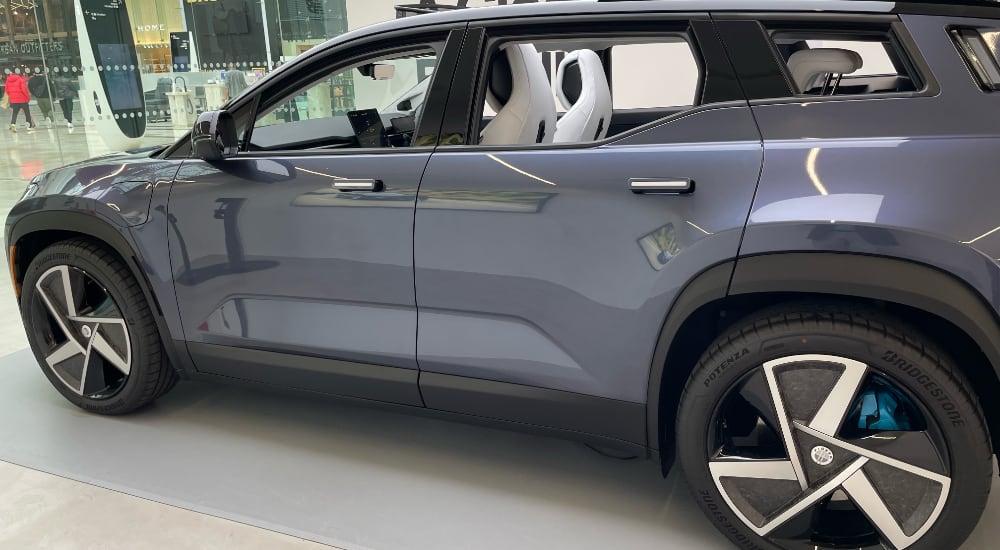Last month, Fisker reported third-quarter revenue of $71.8 million and a net loss of $91 million, or 27 cents per share, which fell short of Wall Street’s expectations.
Florus Beuting, who was named chief accounting officer in early November, left the automaker a short time later, the company said in a regulatory filing.
His exit followed the departure of his predecessor, John C. Finnucan IV, who left in late October after about three years at the startup to take a job with another company, leading Fisker to unexpectedly delay its earnings release.
Fisker said it had “determined that it has material weaknesses in the Company’s internal control over financial reporting.”
CEO: ‘We’re doing quite well.’
CFO Geeta Gupta-Fisker said during an Nov. 11 earnings call with analysts that the third quarter was “highly complex”.
She talked about “growing pains,” according to a transcript of the call, and noted that “we are addressing all these different areas so we can also mature our systems, hire more people, hire more talent to address all these different areas, and it’s a work in progress.”
Then on Dec. 1, Fisker said that it would scale down production and produce fewer cars this year than its previous guidance, to prioritize cash for working capital needs.
“Fisker has made a strategic decision to reduce December production to prioritize liquidity to unlock over $300 million of working capital, which creates additional business flexibility,” the company said in a statement. “As a result, Fisker is adjusting production guidance to just over 10,000 units for 2023.”
Last Friday Fisker said it expects to produce about 10,000 vehicles this year. The decision comes less than a month since Fisker cut its production target to between 13,000 and 17,000 vehicles for 2023. The production guidance is just a quarter of Fisker’s bullish forecast from a year ago.
In November 2022, Fisker said it planned to produce 42,400 Ocean SUVs by the end of 2023 due to strong demand in the U.S. and Europe. That rosy projection was slashed in May to 32,000-36,000 vehicles and then cut again in August to 20,000-23,000 vehicles. This latest update makes four reductions since the spring.
As of Nov. 30, Fisker said it had 123 vehicles either delivered or in transit to customers.
Fisker said in its business update that it has also launched a new strategy to improve deliveries in the U.S. and Europe, which helped it overcome early logistics hurdles. While Fisker didn’t elaborate on exactly what those challenges were, it appears the strategy involves adding more transportation logistics companies to speed up deliveries, increased outreach to reservation holders and opening more facilities dedicated to retail, deliveries and service.
The company said it’s also launching a leasing program in the U.S., Canada and Europe, but didn’t include details on when that might occur.
Fisker also provided an update around hiring, importantly Dan Quirk as its new executive vice president of finance and accounting. The hiring comes after Fisker lost two chief accounting officers in short succession and delayed the filing of its quarterly earnings report with the Securities and Exchange Commission. Other hires include Axel Buhr as vice president of finance and controller operations, Ram Iyer as senior VP of EE integration and validation and Wolfgang Hoffmann as country manager in Canada, where Fisker is about to begin deliveries.
 Chairman and CEO Henrik Fisker said in the statement that “our teams have worked hard to overcome some early delivery challenges and are now setting an impressive pace as we prepare to close out 2023.”
Chairman and CEO Henrik Fisker said in the statement that “our teams have worked hard to overcome some early delivery challenges and are now setting an impressive pace as we prepare to close out 2023.”
“We may not have hit our original forecast but taking current market conditions and negative sentiments around EV sales into account,” he said. “I would say we are doing quite well, as we continue to accelerate sales and deliveries.”
“I expect by the end of this year we will have delivered more customer cars than any Western EV startup did in their first year of deliveries,” he added.
The company also said that it had approval to sell vehicles in Canada and start transporting vehicles from U.S. ports to Canadian customers. Fisker said it had partnered with Scotiabank for financing.
In addition, Fisker said it is pursuing agreements with several major automakers to sell EPA Greenhouse Gas emission credits and expects to generate 2.7 million GHG Credits through model year 2025.
Shares surged immediately following the announcement but were down 1.4% to $1.70 at last check. Fisker shares closed at $7.38 on Dec. 5, 2022.
R.F. Lafferty analyst Jaime Perez slashed his target on Fisker to $3 from $7 while keeping a buy rating on the shares after the announcement.
Evercore ISI analyst Chris McNally downgraded Fisker to In Line from Outperform with a price target of $2, down from $6.
“We know when it’s time (way overdue) to throw in the towel,” McNally wrote in a research note.
In addition to a general lack of execution or tangible evidence of increased execution, McNally sees Fisker’s next 12 months as a “highly precarious tightrope of execution, brand risk, capital raises and dilution.”
Not great news for the Fisker team. UK deliveries have just commenced and we received an invitation for test drive in Glasgow only this week:
Thank you for your interest in the Fisker Ocean and we would like to offer you an accompanied 20-minute test drive between December 6th and December 22nd, 2023. You will have the opportunity to experience the Fisker Ocean up close at The Village Gym in Glasgow.
Opening Hours: 10:00 – 17:00
Address: 7 Festival Gate, Glasgow, G51 1DB, United Kingdom
We look forward to welcoming you and providing you with a great test drive experience with the Fisker Ocean.
